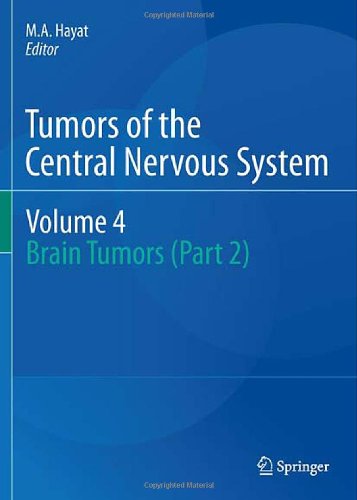مشاهده سبد خرید “Atlas of Deep Endometriosis: MRI and Laparoscopic Correlations 2018” به سبد خرید شما اضافه شد.
Tumors of the Central Nervous System, Volume 4: Brain Tumors (Part 2) 2011
دانلود کتاب پزشکی تومورهای سیستم عصبی مرکزی، جلد 4: تومورهای مغزی (قسمت دوم)
ناشر:
Springer Netherlands
| نویسنده |
M.A. Hayat |
|---|
| تعداد صفحهها |
386 |
|---|---|
| نوع فایل |
|
| حجم |
11 Mb |
| سال انتشار |
2011 |
89,000 تومان
دانلود ۳۰.۰۰۰ کتاب پزشکی فقط با قیمت یک کتاب و ۹۹ هزار تومان !
توضیحات
این جلد عمدتا حاوی اطلاعاتی در مورد تشخیص، درمان و پیش آگهی تومورهای مغزی است. بینش های مربوط به درک مسیرهای مولکولی درگیر در زیست شناسی تومور، که باید به توسعه داروهای موثر منجر شود، توضیح داده شده است. اطلاعات در مورد مسیرها (مانند جوجه تیغی) درمان های هدفمند در سرطان را تسهیل می کند. مدلهای توموری، که از دادههای بیان، حساسیت مسیر، و ناهنجاریهای ژنتیکی، که هدف سرطان هستند، استفاده میکنند، نیز ارائه شدهاند. به عنوان مثال، یک مدل موش از تومورهای بدخیم مغز با استفاده از کاشت دوکسوروبیسین با دانههای فیلتر دارو برای تحویل نشان داده شده است. آینده درمان های مبتنی بر مسیر برای تومورها خلاصه شده است. اهمیت شخصی سازی مراقبت از سرطان تاکید می شود. نیاز به اقدامات حمایتی برای بازماندگان سرطان مغز و همچنین نظارت بر کیفیت زندگی نشان داده شده است. نیاز به درمان توانبخشی برای بیماران مبتلا به تومورهای مغزی اولیه و متاستاتیک نیز مورد تاکید قرار گرفت. نقش MicroRNA در تمایز تومورهای اولیه از تومورهای اولیه متاستاتیک مورد بحث قرار گرفته است. مزایا و محدودیت های شیمی درمانی (به عنوان مثال، تموزولوماید و دوکسوروبیسین) مورد بحث قرار گرفته است. پیچیدگی انتقال تومور را توضیح دهد. نمونه های مورد بحث عبارتند از: متاستازهای مغزی ناشی از سرطان سینه و متاستازهای مغزی ناشی از سرطان ریه سلول غیر کوچک. شناسایی و توصیف بیومارکرها، از جمله آنهایی که برای تومورهای متاستاتیک مغزی هستند، ارائه شده است. تجزیه و تحلیل ژنتیکی برای شناسایی زیرگروه های مرتبط بالینی گلیوبلاستوما گنجانده شد. تعداد زیادی روش تصویربرداری برای مطالعه توسعه و تهاجم گلیوما به تفصیل ارائه شده است
توضیحات(انگلیسی)
This volume mainly contains information on the diagnosis, therapy, and prognosis of brain tumors. Insights on the understanding of molecular pathways involved in tumor biology are explained, which should lead to the development of effective drugs. Information on pathways (e.g., hedgehog) facilitates targeted therapies in cancer. Tumor models are also presented, which utilize expression data, pathway sensitivity, and genetic abnormalities, representing targets in cancer. For example, rat model of malignant brain tumors using implantation of doxorubicin with drug eluting beads for delivery is explained. The future of pathway-driven therapies for tumors is summarized. The importance of personalizing cancer care is emphasized. The need for supportive measures for survivors of brain cancer is pointed out, so is the quality of life monitoring. The need of rehabilitation therapy for patients with primary and metastatic brain tumors is also emphasized. Role of MicroRNA in distinguishing primary tumors from metastatic primary tumors is discussed. Advantages and limitations of chemotherapy (e.g., temozolomide and doxorubicin) are discussed. The complexity of tumor to tumor transfer is explained; examples discussed are: brain metastases from breast cancer and brain metastases fro non-small cell lung carcinoma. Identification and characterization of biomarkers, including those for metastatic brain tumors, are presented. Genomic analysis for identifying clinically relevant subtypes of glioblastoma is included. A large number of imaging modalities are detailed to study progression and invasion of gliomas




